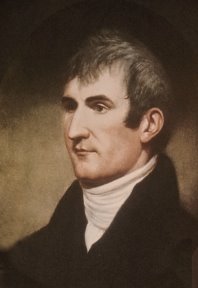Courtesy of Future Crunch, here is a selection of good-news stories from the past year. Most did not make it into mainstream media (whatever that means nowadays), because good news is generally statistical, while bad news - “powerful people behaving badly,” “something went wrong” - often takes the form of a narrative. We like a good story, even if it makes us feel terrible. These stories are drier, but won’t leave the reader feeling helpless and hopeless.
Africa: Morocco expanded paid paternity leave to 15 days. Niger has reclaimed 400,000 hectares of desert land under the multi-national Green Wall project. Benin legalized abortion. Sierra Leone’s president announced the allocation of 22 percent of next year’s budget to education. Togo announced eradication of four tropical diseases, including trachoma and trypanosomiasis. The Central African Republic, Equatorial Guinea, and Zambia outlawed the death penalty. Rwandan hospitals used drones to make 250,000 medical deliveries.

Students in Sierra Leone. Credit: The Guardian
Asia: As of 2020, 97 percent of India’s households have access to electricity. The Philippines banned child marriage. “You’ll have to go to the United States for that sort of thing,” officials in Manila reportedly said. In China, the city of Chaozhou is planning a 43 GW wind farm in the Taiwan Strait. Thailand legalized medical marijuana.
Europe: Several large western European countries have announced plans to replace home gas boilers with heat pumps and boost wind turbine construction. A certain Russian president may have had something to do with this. Poland accepted over two million refugees from the Ukraine war. 92 Saimaa seal pups were born in Finland. Seville, Spain is building underground canals to help cool the city. London turned seven billion lbs. of earth from the Elizabeth Line excavation into a wetland bird sanctuary. British firms announced an increase in productivity from their experimental four-day work week; four out of five plan to continue the experiment voluntarily.
North America: Canada approved psilocybin and MDMA as psychiatric drugs. Canada also announced plans to increase annual immigration to 500,000 by 2025. I don’t know if these stories are related. The following two might be: solar power capacity in the United States has risen 2,000 percent since 2011, and Duke Energy announced it will fully exit coal-fired power generation by 2035. The American Inflation Reduction Act allocated about $40 billion for conservation. The Snoqualmies bought 12,000 acres of ancestral land in Washington state. Five other Native nations partnered with the U.S. to manage Bears Ears National Monument. Colorado, California, and Maine will provide free school meals to all public-school students. California announced plans to manufacture insulin for state residents. In Mexico, same-sex marriage is now legal in all states, and bullfighting is illegal.

Bear's Ears Natl. Monument (Wikimedia)
South America: Lula defeated Jair Bolsonaro in the Brazilian presidential election. This is unqualified good news for the whole planet. Also in Brazil, the golden lion tamarin has been saved from extinction. The Rainforest Trust protected one million more acres of tropical forest in Ecuador, Central America, and southeast Asia.
The World at Large: Artemis I successfully launched and rounded the Moon in November. Global child mortality reportedly dropped from twelve to five million between 1990 and 2020. The Intl Energy Agency reports that renewable and nuclear power now employ more people globally than fossil fuels. In Australia, ranchers are raising asparagopsis seaweed as an additive to cattle feed. It will reduce methane omissions by up to 95 percent and make cows more comfortable in social situations.







